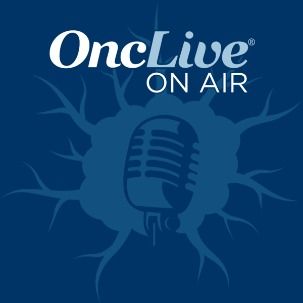Article
Plinabulin Shows Efficacy in Chemo-Induced Neutropenia Prevention During COVID-19 Era
Author(s):
Plinabulin was found to be a more favorable option for the prevention of chemotherapy-induced neutropenia compared with pegfilgrastim during the coronavirus disease 2019 pandemic.
Douglas W. Blayney, MD

Plinabulin was found to be a more favorable option for the prevention of chemotherapy-induced neutropenia (CIN) compared with pegfilgrastim (Neulasta) during the coronavirus disease 2019 (COVID-19) pandemic, according to retrospective findings that were presented as a poster during the virtual 2020 ESMO Congress.1
Results, which were from 2 phase 2 trials, showed that same-day dosing on the day of chemotherapy reduces health care touches with 50% with plinabulin versus pegfilgrastim. Additionally, while plinabulin and pegfilgrastim have comparable efficacy for CIN, and clinical sequelae of CIN, plinabulin was found to have a superior profile for bone pain, quality of life, and platelet counts.
Because of COVID-19, the National Comprehensive Cancer Network Myeloid Growth Factor Panel expanded prophylactic G-CSF use to chemotherapy in patients with intermediate risk of febrile neutropenia, and in those low-risk with febrile neutropenia who previously developed the condition.
The recommendations had been altered because resources were attempted to be preserved for patients with COVID-19, thereby reducing hospitalizations and emergency room visits for patients with cancer undergoing chemotherapy.
However, plinabulin is a novel non–growth-colony stimulating factor (G-CSF) small molecule with CIN protection that is comparable to pegfilgrastim, with GEF-H1 as a new target. It is administered once for 30 minutes following chemotherapy, and removes the need for health care system touches on day 1 to 3 for G-CSF administration.
In September 2020, the FDA granted a breakthrough therapy designation to plinabulin for CIN; the agent has also received this designation from China’s Center for Drug Evaluation of the National Medical Products Administration. The application for the breakthrough designation was based on results from the phase 3 PROTECTIVE-2 trial (Study 106; NCT03294577), as well as other CIN studies that have been performed.2
In the retrospective analysis, investigators compared data from 2 different phase 2 studies of patients who received plinabulin at 20 mg/m2 (n = 29) or single-agent pegfilgrastim at 6 mg over 4 cycles.
One trial was PROTECTIVE-1 (Study 105; NCT03102606), in which patients with non–small cell lung cancer with risk factors were given intermediate febrile neutropenia–risk docetaxel at 75 mg/m2. The other was PROTECTIVE-2, which enrolled patients with breast cancer who were given high febrile neutropenia–risk doc plus doxorubicin at 50 mg/m2 along with cyclophosphamide at 50 mg/m2.
In both studies, plinabulin was given as a single intravenous (IV) infusion on day 1 for 30 minutes after the last dose of chemotherapy. Pegfilgrastim was given at 6 mg on day 2 via subcutaneous injections.
Results showed that there were fewer neutropenic complications with plinabulin compared with pegfilgrastim. Numbers were similar between pegfilgrastim and plinabulin with grade 4 neutropenia at 42.9% and 44.8%, respectively (P value = non-significant), and hospitalizations (11.4% vs 13.8%, respectively; P = non-significant). This was similar in infection rates (5.71% vs 6.9%; P = non-significant) and sepsis (0% vs 3.44%; P = non-significant), but pegfilgrastim was much higher with regard to all-grade thrombocytopenia at 68.6% versus 24.1% with plinabulin (P = .0002), grade 2/3 thrombocytopenia (20% vs 3.4%; P = .025), and grade 3 thrombocytopenia (8.57% vs 0%; P = .06).
Moreover, plinabulin was found to have improved QoL and less bone pain compared with pegfilgrastim.
Based on these data, an Expanded Access Program has been initiated to allow plinabulin to become available to physicians, the investigators concluded.
References
- Blayney DW, Huang L, Mohanlal RW, et al. Plinabulin is a more favorable option for the prevention of chemotherapy induced neutropenia (CIN) than pegfilgrastim during the COVID-19 pandemic. Presented at: 2020 ESMO Congress; September 19-21, 2020; virtual. Abstract 3367.
- BeyondSpring receives breakthrough therapy designations from both US FDA and China NMPA for plinabulin in chemotherapy-induced neutropenia indication. News release. BeyondSpring Pharmaceuticals. September 8, 2020. Accessed September 10, 2020. https://bit.ly/2Rd7YXN.









%20(2)%201-Recovered-Recovered-Recovered-Recovered-Recovered.jpg?fit=crop&auto=format)